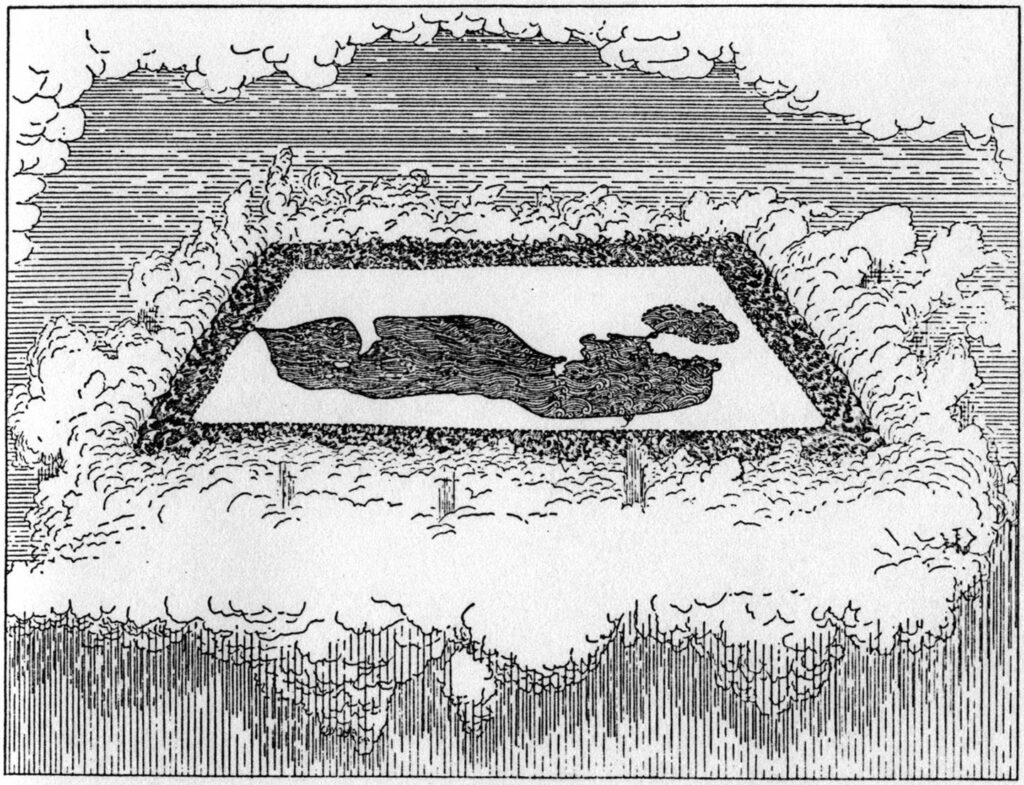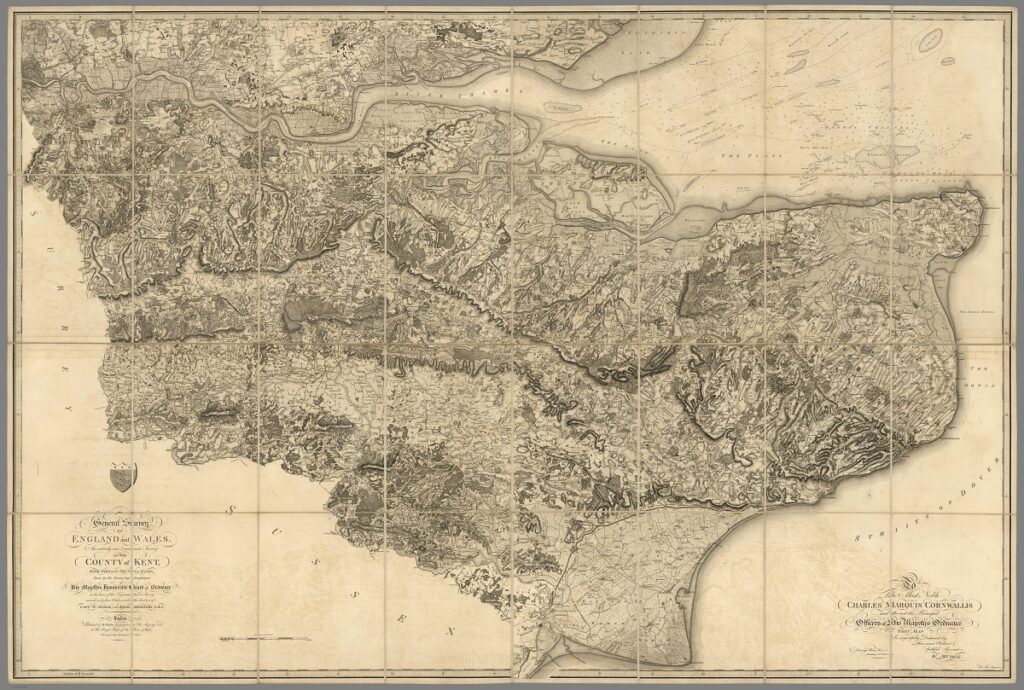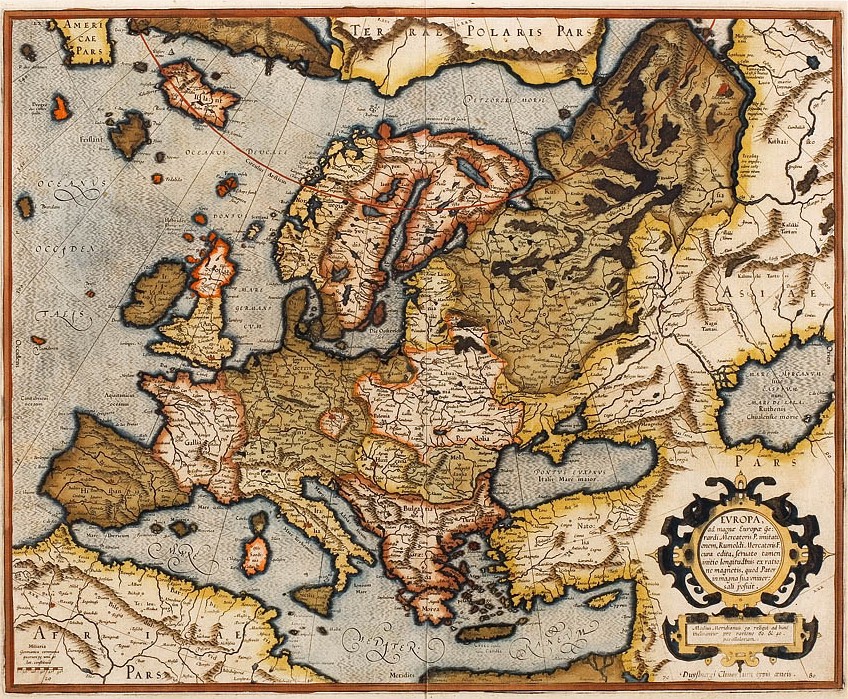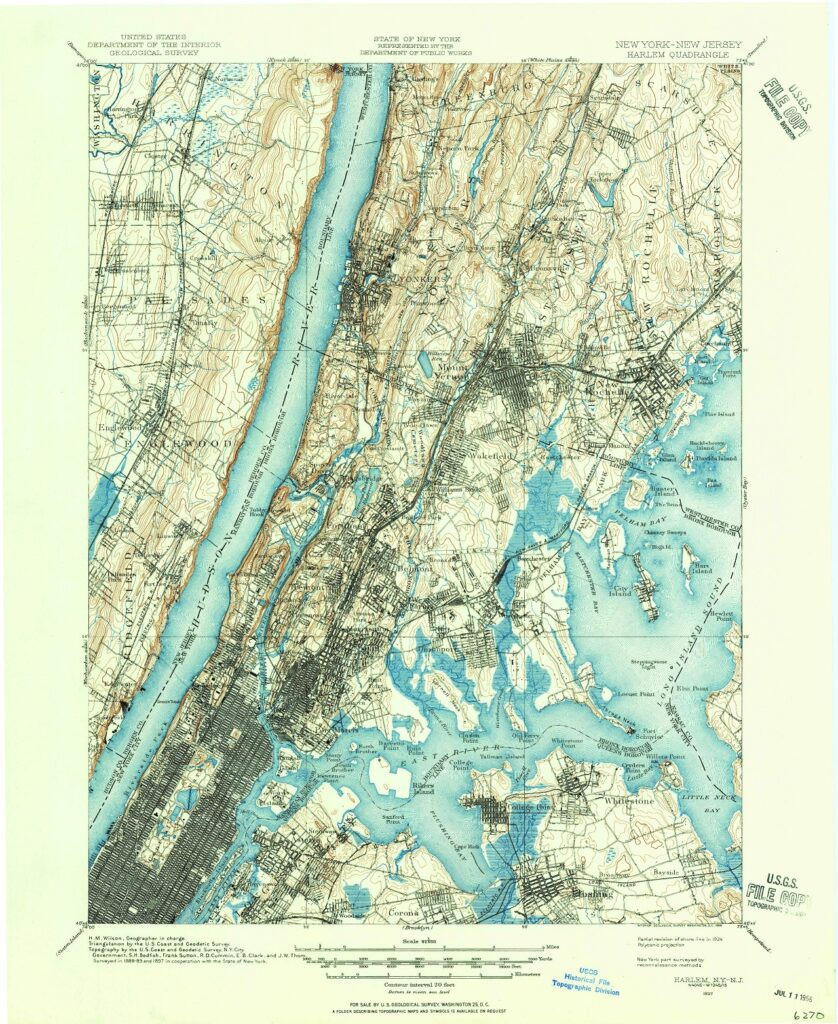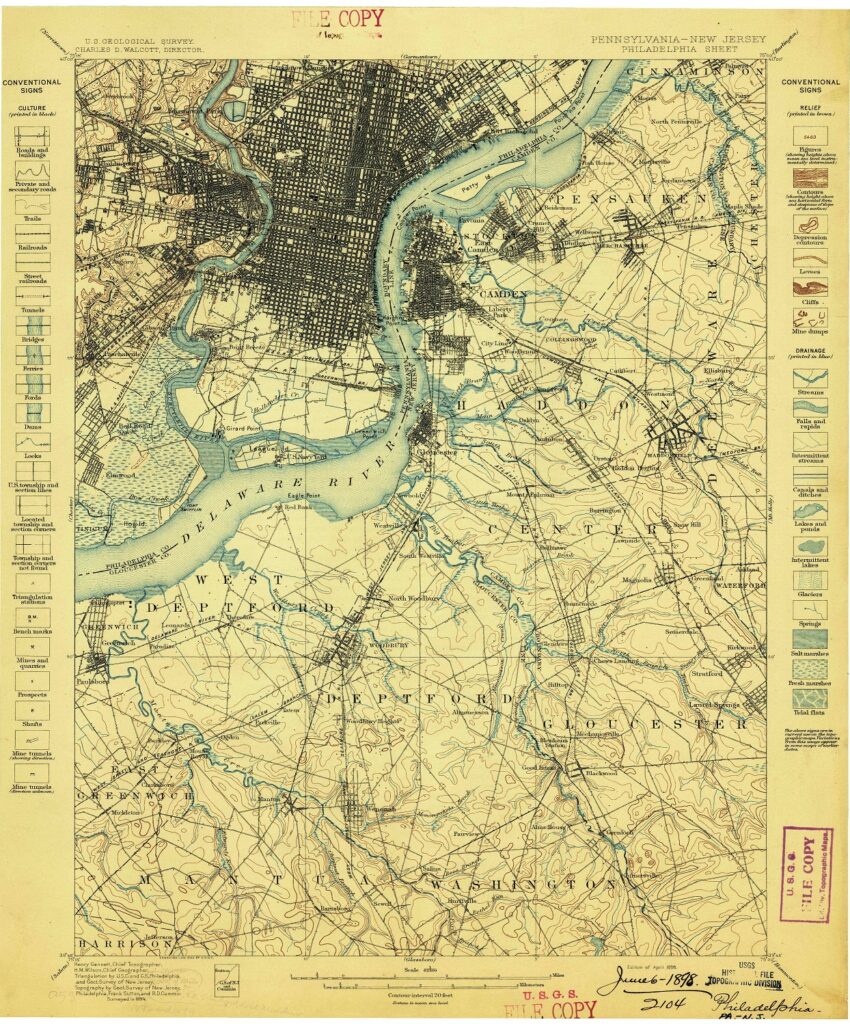Terrain Maps
What is a Terrain Map?
We build 2D and 3D Terrain Maps
Table of Contents
Terrain Maps
From the rugged peaks of the Himalayas to the sweeping plains of the African savanna, the terrain of our planet is both diverse and awe-inspiring. As humans, we have been fascinated by the landforms that make up our world for centuries, and have created countless tools to help us explore and understand them. One of the most essential of these tools is the terrain map.
A terrain map is a type of map that focuses on the physical features of the land, such as mountains, valleys, and rivers. Unlike traditional maps, which often prioritize political boundaries or man-made landmarks, terrain maps highlight the natural features that make each region unique. By doing so, they allow us to better understand the geological history of our planet, as well as the complex relationships between geography, climate, and ecosystems. But what are some of the most exciting and innovative uses of terrain maps today?
- Disaster Response: One of the most important applications of terrain maps is in the field of disaster response. During natural disasters such as earthquakes, floods, and wildfires, terrain maps can be used to identify areas that are at the highest risk for damage. This allows emergency responders to target their efforts more effectively, directing resources and personnel to the areas that need them most. Terrain maps can also be used to create evacuation plans and to identify potential hazards such as landslides and mudflows.
- Research: Terrain maps are also essential for exploration and scientific research. Geologists, for example, use terrain maps to study the structure and composition of the Earth’s crust. By analyzing the features of the land, geologists can gain a better understanding of the underlying geological processes that shape our planet. Archaeologists also use terrain maps to identify potential sites for excavation, as well as to study the distribution of cultural artifacts and human settlements.
- Biology: Biologists also rely on terrain maps to study the distribution of plant and animal species. By analyzing the topography and climate of different regions, biologists can gain insights into the factors that influence the distribution and abundance of different species. This information can be used to develop conservation strategies and to better understand the impact of climate change on ecosystems.
- Urban Planning: Another exciting application of terrain maps is in the field of urban planning. By analyzing the topography and physical features of different regions, urban planners can develop more efficient and sustainable cities. This includes identifying areas that are at risk for flooding or other natural disasters, as well as designing transportation networks that take advantage of natural features such as hills and valleys.
In addition to these practical applications, terrain maps are also incredibly beautiful. From the sweeping curves of a river valley to the jagged peaks of a mountain range, the natural features that are highlighted on terrain maps offer a stunning visual display of the world around us. And with advances in technology and data collection, these maps are becoming more detailed and precise than ever before, allowing us to explore and appreciate the natural world in a whole new way.
Sample 3D Terrain Maps
3D Topography of Bentcreek Watershed in North Carolina (mid production)
3D Topography of Bentcreek Watershed in North Carolina. Measures 6'x4' with a White Oak shadowbox base and a 30” tall podium.
3D Topography of Bentcreek Watershed in North Carolina. Measures 6'x4' with a White Oak shadowbox base and a 30” tall podium.
Terrain maps are incredibly useful tools for exploring and understanding the physical landscape of our planet. These maps provide a wealth of information about the natural features that make each region unique, from the heights of mountains to the depths of valleys and canyons. But what are some of the most exciting features of terrain maps?
- 3D Structure: First and foremost, terrain maps are designed to show the three-dimensional structure of the land. Unlike traditional maps, which use flat two-dimensional representations, terrain maps incorporate elevation data to provide a more accurate and detailed view of the landscape. This allows us to better understand the topography of a region and to visualize the complex interplay between geography, climate, and ecosystems.
- Contour Lines: Another key feature of terrain maps is the use of contour lines. These lines connect points of equal elevation, providing a visual representation of the shape and steepness of the land. By following these lines, we can trace the flow of rivers and streams, the rise and fall of hills and mountains, and the sharp drop-offs of cliffs and canyons. This information is essential for outdoor enthusiasts, hikers, and climbers who need to navigate through unfamiliar terrain.
- Color: Terrain maps also use color to represent different elevations. Generally, higher elevations are depicted in shades of brown, while lower elevations are shown in shades of green or blue. This creates a visually striking image that makes it easy to quickly identify areas of high or low elevation.
- Shading: Another important feature of terrain maps is the use of shading and other visual cues to show the orientation of slopes. By understanding the direction and steepness of slopes, we can gain insights into the distribution of precipitation, the formation of soils, and the movement of wildlife through a region.
- Layers: Finally, terrain maps often incorporate other types of data, such as land cover, water bodies, and human settlements. By layering these different types of information, terrain maps can provide a comprehensive view of a region’s physical and cultural features.
- Technology: In recent years, advances in technology and data collection have made terrain maps more detailed and precise than ever before. New satellite imagery and high-resolution elevation data are being used to create stunningly accurate and visually striking maps that allow us to explore and appreciate the natural world in a whole new way.
Sample USGS Current and Historical Topographic Maps
Culpeper Virginia 2020-USGS Topographic Map
Acadia National Park 1904-USGS Topographic Map
Petit Manan Point Maine 1948-USGS Topographic Map
Menan Buttes Idaho 1951-USGS Topographic Map
New Orleans Louisiana 2020-USGS Topographic Map
Mount Olympus Washington 1942-USGS Topographic Map
Glacier National Park 1938-USGS Topographic Map
Renovo Pennsylvania 1946-USGS Topographic Map
Hebgen Dam Montana 2020-USGS Topographic Map
Strasburg Virginia 1947-USGS Topographic Map
Jaunita Arch Colorado 1960-USGS Topographic Map
Valdez Alaska 1996-USGS Topographic Map
Terrain maps are incredibly useful tools for exploring and understanding the natural world. They provide a wealth of information about the physical landscape of our planet, from the heights of mountains to the depths of valleys and canyons. But what are some of the specific benefits of using terrain maps?
- Better Navigation: One of the most obvious benefits of terrain maps is that they make it easier to navigate through unfamiliar terrain. By incorporating elevation data, contour lines, and other visual cues, these maps provide a clear and accurate picture of the landscape. Hikers, climbers, and outdoor enthusiasts can use this information to plan their routes and avoid dangerous areas.
- Improved Safety: In addition to better navigation, terrain maps can also help improve safety in outdoor activities. By showing the location of water bodies, steep slopes, and other hazards, these maps can help prevent accidents and injuries. They can also provide valuable information for search and rescue teams in the event of an emergency.
- Environmental Analysis: Terrain maps can also be used to study the natural environment and the impact of human activity on the land. By incorporating data on land cover, water bodies, and other features, these maps can provide a comprehensive view of a region’s ecology. This information can be used to monitor the health of ecosystems, track changes over time, and identify areas that need protection or restoration.
- Urban Planning: Terrain maps are not just useful for studying natural landscapes, they can also be used in urban planning. With data on buildings, roads, and other infrastructure, these maps can provide a clear picture of how cities and towns are laid out. This information can be used to plan new developments, identify areas that need improvement, and ensure that resources are allocated efficiently.
- Education and Outreach: Finally, terrain maps can be used for education and outreach. They provide a visually striking representation of the natural world that can be used to teach students about geology, geography, and other subjects. They can also be used to engage the public in discussions about conservation and environmental stewardship.
Terrain maps offer a wide range of benefits for navigation, safety, environmental analysis, urban planning, and education. By providing a detailed and accurate view of the landscape, these maps can help us better understand and appreciate the natural world around us. Whether you’re a hiker, scientist, urban planner, or educator, terrain maps are an essential tool for exploring and studying the physical world.
Our high-quality maps and models are on display at museums, national parks, university campuses, sports facilities, hospitals, and research organizations worldwide. One of our more recent raised relief projects was of the Great Smoky Mountains National Park and the surrounding area. This large raised relief map covered over 1.2 million acres in a 91″ x 56″ frame.
We meld top-of-the-line technologies with professional cartography resources to create stunning terrain maps and models. Our expertise in 3D printing enables us to allow more markets to benefit from purchasing durable, portable, and affordable models.
Gallery of eCommerce 3D USGS Topographic Maps and 2D Canvas Prints
Shop WhiteClouds 3D USGS Topographical Maps with 65,240 three-dimensional maps to choose from. There are also 361,902 3D USGS Historical Topographical Maps to choose from. These maps are not flat. They are three-dimensional, with the height being determined by Digital Elevation Model (DEM) data. These 3D maps are built by combining satellite imagery data from the USGS and DEM data. Make a statement with these beautiful 3D map images from every part of the United States.
Shop WhiteClouds 2D USGS Topographical Canvas Print Maps with 427,142 maps to choose from. These canvas print maps have both current and historical USGS topographic maps (from 1882 to present). There are also satellite and terrain canvas print maps that use the USGS coordinates.
Gallery of Custom 3D Map Projects
How 3D Terrain Maps are Made
There are several techniques used to create terrain maps, and the process can vary depending on the scale and complexity of the map. However, the basic steps involved in making a terrain map are as follows:
- Create a base map. The first step in making a contour map is to create a base map of the area. This can be done using imagery from a standard two-dimensional map, aerial photographs, satellite images, or WhiteClouds can do it for you.
- Determine the design style of the map. There are over 40 styles to choose from. Popular ones include satellite, terrain, topography, raised relief, and satellite hybrid.
- Add any special design features not included in the source map, such as special features, landmarks, legends, roads, cities, symbols, etc.
- Add elevation data. The next step is to add elevation data to the map. This can be done using a variety of techniques, such as contour lines, shading, or digital elevation models (DEMs).
- Print the Map Overlay. Latex vinyl materials are used for the map details and colors.
- Create the 3D physical map. Once the elevation data has been added to the map, a physical 3D structure is created that replicates the topography of the area. This can be done using 3D printed plastic or thermoformed molding/casting. Either approach is combined with the Vinyl overlay.
- Finish the map. This is where any excess materials are cutaway. Any special sealers, matte finishes, hardeners, or UV protection is applied. Wood, metal or plastic bases are built and border flocking may be applied.
Features & Benefits of Terrain Maps
- Remarkably Strong: You can drive a 1-ton truck over our terrain maps.
- Precision: We print our terrain maps to scale as accurately as are the original files and images.
- Excitement: It is much easier to get excited about 3D views of your ski runs or trails than flat printed maps.
- Stain and Water Resistance: Spills are easy to wipe up.
- Communication: Terrain maps are simple to understand with a quick glance.
- Affordability: Our 3D technologies allow you to order custom 3D maps for a reasonable price.
- Testability: 3D technologies are affordable enough to test designs, such as several versions of planned work.
- Consistency: Using modern print and casting technologies, you can easily recreate identical 3D maps.
- Portability: We use lighter materials than what was available in the past, making our terrain maps easy to transport.
Videos of 3D Maps
Map Design Styles of Terrain Maps
Many design styles, or base maps, serve as a starting point for your terrain map. We source and create our base maps using the same digital tools that expert cartographers use to create maps. Once you have selected your base map, everything else is fully customizable. We can layer informational text (such as landmarks or other points of interest) and even change the colors to suit your preferences.
Complex layers can be added such as streams and lakes, terrain, roads, and even more detail like political boundaries, religious, and other population-based demographics. Multiple layers can also be added to the same terrain map. For example, community developers and city planners can benefit from a 3D map with layers that include parcel lines, existing building footprints, and utility lines. Take a look at the map style categories below for inspiration.
Technology and Materials Used in Terrain Maps
- With 3D printing technology, you are not limited to straight lines and boxes. The curves and cliffs are captured accurately and beautifully in astonishing detail.
- Your vision of the final 3D map determines which materials we will choose to produce the best results. We help you to determine the materials that best suit your project.
- We use fabrication technologies such as 3D printing, CNC cutting, and molding/casting.
- Terrain maps show incredible detail.
- Our maps are printed in full color (with over 17 million variations of color) for awe-inspiring presentations and displays. No painting required!
- Typically, we use a special process for finishing the sides of the raised relief maps in a suede-like material, similar to the finish of a jewelry box.
- Our in-house paint booth gives us flexibility in different types and grades of paint and finishing capabilities; we can provide UV-resistant coatings to protect the coloration of your 3M map for many years.
- We also offer customized additions to our 3D maps and models. Our in-house carpentry shop will build elegant bases, tables, or cabinetry to display any map you choose. Worried about dust? We can customize a case to protect your display as well. Our skilled artisans can hand-paint details to make your map a true work of art.
Pricing of Custom Terrain Maps
The price of 3D maps and models are generally based on your size requirements, specific design needs, and the amount of work it will take to produce. Each map is custom-built and charged for accordingly. The best way to determine cost is to email us, call us at 385-206-8700, or fill out the form below and let us bid on your project.
Get a Free Price Estimate for a Custom Contour Map
Custom Fabrication Workflow
Common Questions & Answers
- What is the largest map you can fabricate? There is no limit to the size of a map we can build. There are practical limits that will impact shipping and installation, but we work closely with our customers on these special requirements.
- What type of 3D maps can you fabricate? All types. Satellite Maps, Terrain Maps, Topographical Maps, Raised Relief Maps, USGS Maps, Contour Maps, and many more.
- Can you fabricate with different technologies and materials? Yes. Our most common fabrication technology is 3D Printing, but we can also build 3D Maps with CNC Cutting, 3D Foam, Molding/Casting, Thermoforming, and Sculpting.
- What materials can you 3D print in? We match the correct material and fabrication process to your requirements in terms of presentation, size, and transportability. We can 3D print in PLA, FDM, Full-Color Sandstone, UV-cured resin, plastic, rubber-like, acrylic, and nylon – as well as combining multiple technologies.
- Can you sign a Non-disclosure Agreement that you supply? Yes.
- How long will it take to create my map? That depends on the design and size of the map. A more complex or detailed map will take longer than a simple map, we can’t really say exactly how long it will take until we have the chance to understand what type of map you want fabricated. Generally, smaller standard maps can be a couple of weeks and large museum exhibition maps can be 6 months.
- What do you need from me to start the map fabrication? Boundaries are a good place to start. Determining map styles, sizes, height (may be exaggerated), and cabinetry needs are all part of the process. Special design features can also be added.
- Can you add homes, buildings, swimming pools, arbors, hardscaping features, etc.? Yes. We can 3D print many of these items and include them in our maps. We refer to these more complex maps as architectural dioramas.
- How do you read terrain maps? Terrain maps are an important tool for anyone who wants to understand the landscape around them. However, they can be difficult to read for those who are not familiar with the symbols and terminology used on these maps.
The first step in reading a terrain map is to understand the different symbols used on the map. These symbols represent various features on the landscape, such as mountains, rivers, forests, and roads. It is important to study the map legend, which explains the meaning of each symbol, so that you can correctly interpret the information on the map.
Once you understand the symbols on the map, you can start to interpret the elevation contours. These lines show the changes in elevation across the landscape. The closer together the lines are, the steeper the slope. Conversely, if the lines are far apart, it indicates a flatter terrain.
The elevation contours also help you identify ridges and valleys. Ridges are indicated by a series of contour lines that form a V shape, with the point of the V pointing uphill. Valleys are indicated by a series of contour lines that form a U shape, with the open end of the U pointing downhill.
Another important feature on a terrain map is the scale. The scale is the ratio between the distance on the map and the distance in the real world. For example, a scale of 1:50,000 means that one unit of measurement on the map equals 50,000 units of measurement in the real world. Understanding the scale is important for estimating distances and planning routes.
Finally, it is important to pay attention to the orientation of the map. Most terrain maps are oriented to the north, but some maps may be oriented to the south or east. Understanding the orientation of the map is important for navigation and orientation.
- What does a terrain map show? Terrain maps are graphical representations of the topography of an area. They show the physical features of the land, such as hills, valleys, rivers, and mountains. These maps are often used by hikers, geologists, and other outdoor enthusiasts to plan routes and explore new areas.
Terrain maps are created using a variety of methods, including aerial photography, satellite imagery, and ground surveys. The data collected from these sources is then used to create detailed, three-dimensional maps that accurately depict the terrain of the area.
Terrain maps can be helpful for a wide range of purposes, from planning hiking or camping trips to conducting geological surveys. They are also useful for urban planning, resource management, and environmental analysis.
- How is elevation shown on a terrain map? A terrain map is a type of map that shows the physical features of a particular area, such as hills, valleys, mountains, rivers, and other natural landmarks. These features are typically represented using contour lines, which indicate changes in elevation or altitude.
In addition to natural features, terrain maps may also show man-made structures, such as roads, buildings, and bridges. These features are often depicted in a different color or style than the natural features, making them easy to distinguish.
Terrain maps are often used by hikers, climbers, and other outdoor enthusiasts to plan routes and navigate through unfamiliar terrain. They can also be used by geologists, hydrologists, and other scientists to study the natural features of an area and understand how they have evolved over time.
- What is a basin terrain map? A basin terrain map is a type of terrain map that focuses on the topography of a particular basin or watershed. A basin is an area of land that is defined by its natural boundaries, such as hills or ridges, and is drained by a single river or stream.
A basin terrain map shows the physical features of the basin, including its drainage patterns, the location and elevation of hills and mountains, and the flow of water through the basin. The map typically uses contour lines to show changes in elevation and may also use different colors or shading to highlight different features of the basin.
Basin terrain maps are used for a variety of purposes, including hydrological modeling, environmental assessment, and resource management. They are particularly useful for understanding how water flows through a particular basin and how it may be affected by changes in the landscape or human activities.
- How do you identify terrain features on a map? To identify terrain features on a map, you need to understand the symbols and markings used to represent them. Here are some tips on how to identify different types of terrain features on a map:
Contour lines: Contour lines are the most common way of representing terrain features on a map. They are typically brown and show changes in elevation. Lines that are close together indicate steep slopes, while lines that are far apart indicate flat areas.
Hills and mountains: Hills and mountains are represented by concentric circles on a map, with the circles getting smaller towards the center. The circles may be labeled with the height or elevation of the feature.
Valleys: Valleys are represented by U-shaped contour lines that point upstream. The contour lines will be closer together at the bottom of the valley and further apart at the top.
Rivers and streams: Rivers and streams are shown as blue lines on a map. The lines will usually be thicker where the water flow is stronger, and thinner where it is weaker.
Cliffs: Cliffs are represented by contour lines that are very close together or even touching. They may also be shown as a black line with tick marks pointing away from the cliff face.
Forests and vegetation: Forests and other types of vegetation are shown on a map using various symbols, such as green areas or clusters of trees.
By understanding these symbols and markings, you can identify and interpret terrain features on a map. This can be helpful for a range of activities, from hiking and camping to scientific research and environmental analysis.
- How do you calculate elevation on a terrain map? Elevation on a terrain map can be calculated using the contour lines that represent changes in height or altitude. Here are the steps to calculate elevation on a terrain map:
Look for the contour lines on the map: Contour lines are brown lines that represent changes in elevation or altitude. They typically have numbers or labels that indicate their elevation or height above sea level.
Determine the contour interval: The contour interval is the difference in elevation between adjacent contour lines. It is usually indicated on the map legend.
Identify the contour lines: Find the two contour lines that surround the point where you want to calculate the elevation.
Determine the vertical distance between the contour lines: Subtract the elevation of the lower contour line from the elevation of the higher contour line. For example, if the lower contour line is labeled as 500 feet and the higher contour line is labeled as 550 feet, the vertical distance is 50 feet.
Divide the vertical distance by the contour interval: Divide the vertical distance by the contour interval to get the number of contour intervals between the two contour lines. In the example above, if the contour interval is 10 feet, the number of contour intervals would be 5.
Multiply the number of contour intervals by the contour interval: Multiply the number of contour intervals by the contour interval to get the total change in elevation between the two contour lines. In the example above, the total change in elevation would be 50 feet.
Add the elevation of the lower contour line: Add the elevation of the lower contour line to the total change in elevation to get the elevation of the point you are interested in. In the example above, if the lower contour line is labeled as 500 feet, the elevation of the point would be 550 feet.
- How do you draw a terrain map? Drawing a terrain map requires a lot of skill and experience, as well as the use of specialized tools and techniques. Here are the general steps involved in drawing a terrain map:
Choose the area to map: Decide on the area you want to map and gather all relevant data, such as elevation data, topographic data, and other geographical information.
Sketch the basic outline of the area: Use a pencil to sketch the basic outline of the area you want to map, including any major features such as mountains, rivers, and lakes.
Add contour lines: Use a ruler and a fine-tip pen or pencil to draw contour lines on the map, representing changes in elevation. The contour lines should be evenly spaced and follow the contours of the landscape.
Add shading and texture: Use different shades of pencil or pen to add shading and texture to the map, representing different types of terrain such as forests, deserts, and grasslands. Use hatching, stippling, or other shading techniques to create depth and dimensionality.
Label the map: Use a fine-tip pen or pencil to label the major features of the map, including the names of mountains, rivers, and other geographic landmarks. Include a key or legend that explains the symbols used on the map.
Add finishing touches: Use erasers or whiteout to remove any mistakes or smudges on the map. Check for accuracy and completeness, and make any necessary revisions.
Drawing a terrain map is a complex process that requires careful attention to detail and a good understanding of the geography and topography of the area being mapped. It is typically done by professional cartographers or skilled artists using specialized tools and techniques.
- What are terrain maps? Terrain maps are maps that show the physical features of the Earth’s surface, such as mountains, valleys, rivers, and other natural features. They are also known as topographic maps or contour maps, and they use contour lines to represent changes in elevation or altitude. Terrain maps are typically used by hikers, backpackers, and other outdoor enthusiasts to navigate and plan routes through rugged or mountainous terrain. They can also be used by scientists, geologists, and other professionals to study the natural features of the Earth’s surface and to plan infrastructure projects such as roads, bridges, and dams. Terrain maps are usually created using aerial photographs, satellite images, and other topographical data, and they are often accompanied by detailed legends and other explanatory information to help users understand the features represented on the map.
- What can you learn from a terrain map? Terrain maps provide a wealth of information about the physical features of the Earth’s surface. Here are some things you can learn from a terrain map:
Elevation: Terrain maps use contour lines to show changes in elevation or altitude. By studying these lines, you can determine the height or depth of specific features such as mountains, valleys, and ridges.
Slope: Terrain maps also indicate the slope or gradient of the land. Steep slopes are represented by closely spaced contour lines, while gentle slopes are represented by widely spaced contour lines.
Drainage patterns: Terrain maps show the natural drainage patterns of the land, including rivers, streams, and other bodies of water. By studying these patterns, you can identify watersheds and other important hydrological features.
Land use: Terrain maps can also show the types of vegetation and land use in an area. Different types of vegetation are often represented by different shading or coloring, and human-made features such as roads, buildings, and other infrastructure are usually indicated on the map.
Navigation: Finally, terrain maps are an essential tool for navigation in rugged or mountainous terrain. By studying the features on the map, hikers, backpackers, and other outdoor enthusiasts can plan routes and navigate through challenging terrain with greater ease and safety.
Do you have a question we didn’t answer? Don’t hesitate to contact us at 1-385-206-8700 or [email protected].
Worldwide Delivery
WhiteClouds has delivered maps around the world.
History of Terrain Maps
Terrain maps have been around for centuries, with a rich history that spans across cultures and continents. From ancient Greek maps to modern-day satellite imagery, the evolution of terrain maps is a fascinating journey that reveals much about how humans have understood and interacted with the natural world.
The earliest known terrain maps date back to ancient Greece, where philosophers like Anaximander and Pythagoras created maps of the known world that included elevations and other geographical features. These early maps were largely symbolic and did not reflect the true topography of the land, but they marked an important first step in the development of terrain mapping.
Fast forward to the 16th century, when the first truly accurate terrain maps began to emerge. This was largely due to the work of Flemish cartographer Gerardus Mercator, who developed a new projection method that allowed for more precise measurements of distance and direction. Mercator’s maps, which were widely used by sailors and explorers, were instrumental in shaping our understanding of the world and paved the way for more sophisticated terrain mapping techniques in the centuries that followed.
During the 19th century, advances in technology and scientific knowledge led to a surge in terrain mapping activity. Government agencies and scientific organizations around the world began to commission maps that incorporated detailed elevation data and other topographical features. One of the most significant of these efforts was the creation of the Ordnance Survey in the United Kingdom, which produced detailed terrain maps of the entire country that became the gold standard for cartography.
The 20th century saw even more rapid advances in terrain mapping technology, with the advent of aerial photography and satellite imagery. These new tools allowed for even more detailed and accurate terrain maps, which in turn enabled more precise navigation, military operations, and scientific research.
Today, terrain maps are an essential tool for a wide range of applications, from outdoor recreation and urban planning to environmental analysis and disaster response. The rich history of terrain mapping reminds us of the importance of understanding and appreciating the natural world, and how maps have played a vital role in our relationship with the environment throughout history.

